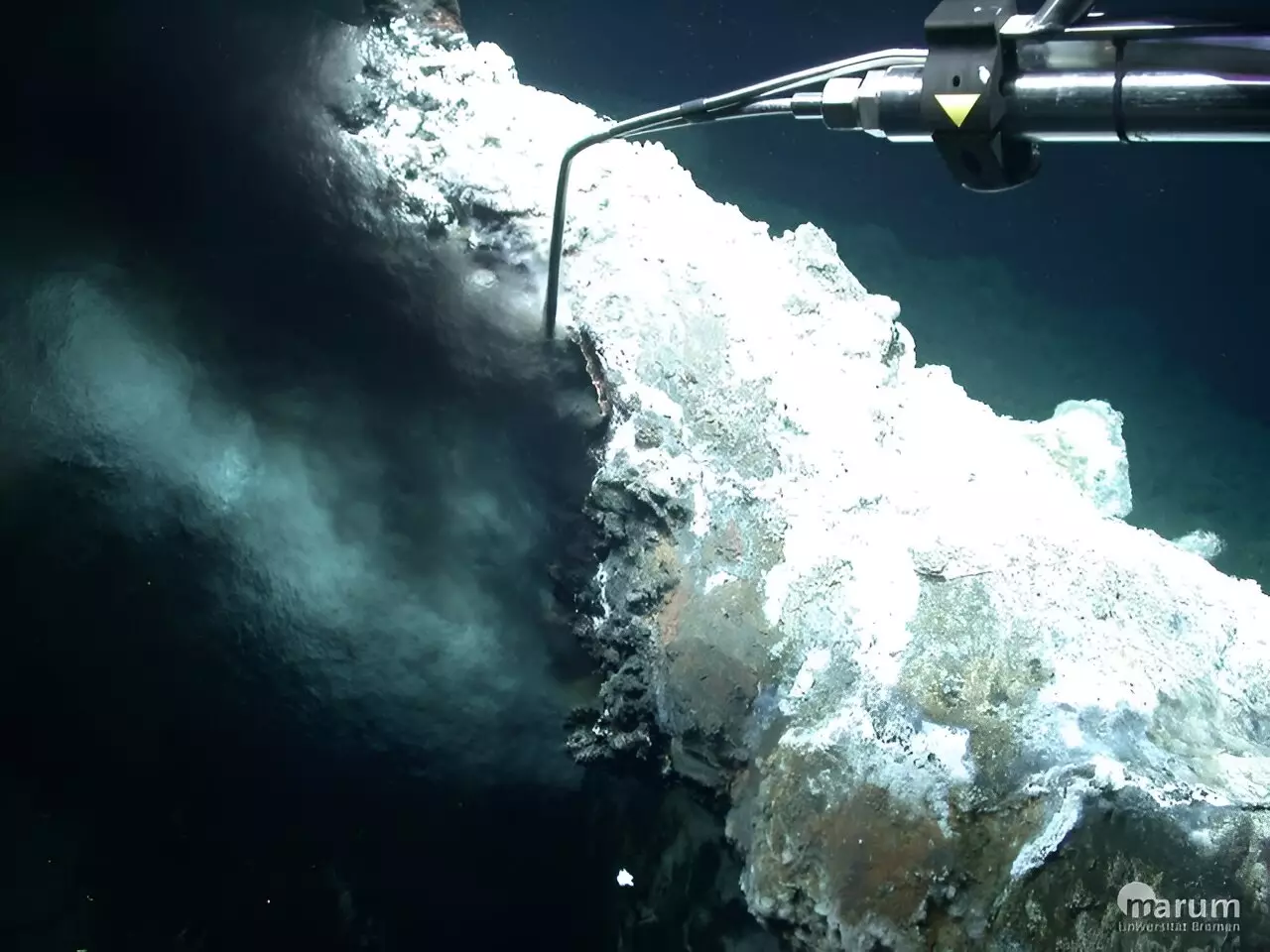The depths of the ocean hold many secrets, and one of the most fascinating mysteries is that of hydrothermal vents. These vents, located at the junctions of drifting tectonic plates, release hot liquids into the sea floor, creating unique ecosystems and geological formations. While many hydrothermal fields have been discovered around the world, there are still many waiting to be explored.
In a groundbreaking expedition in 2022, researchers aboard the MARIA S. MERIAN vessel made a remarkable discovery – the first field of hydrothermal vents on the Knipovich Ridge off the coast of Svalbard. Led by Prof. Dr. Gerhard Bohrmann of MARUM, an international team of scientists from Bremen and Norway documented their findings in the journal Scientific Reports. This discovery sheds light on the complex geological processes that occur deep beneath the ocean’s surface.
The Science Behind Hydrothermal Vents
When water seeps into the ocean floor and is heated by magma, it creates a dynamic environment where mineral-rich fluids rise back to the surface through cracks and fissures. These fluids, enriched with materials from the oceanic crust, can form tube-like chimneys known as black smokers. The newly discovered Jøtul Field is located on the Knipovich Ridge, a slow spreading ridge where the plates move apart at a rate of less than two centimeters per year.
One of the most significant findings from the expedition was the detection of very high concentrations of methane in the fluid samples collected from the Jøtul Field. Methane emissions from hydrothermal vents can contribute to ocean acidification and climate change. Understanding the amount of methane that escapes into the atmosphere is crucial for assessing the impact of hydrothermal activity on the environment.
Exploring New Frontiers
With the discovery of the Jøtul Field, a new chapter in hydrothermal research has begun. The upcoming expedition led by Gerhard Bohrmann will focus on exploring and sampling unknown areas of the field to gather more data on the organisms and geological features present. By comparing the Jøtul Field with other known hydrothermal fields in the Arctic, such as the Aurora Field and Loki’s Castle, researchers hope to gain a deeper understanding of these unique ecosystems.
The Jøtul Field holds great potential for future research and conservation efforts. By studying the interactions between hydrothermal activity, methane emissions, and marine life, scientists can better predict the impact of these vents on the environment. The field will serve as a valuable resource for ongoing research in the Cluster, contributing to our knowledge of the deep-sea ecosystems and the role they play in the global climate system.
The discovery of the Jøtul Field marks a significant milestone in our understanding of hydrothermal vents and their impact on the environment. As we continue to explore and study these unique ecosystems, we will uncover new insights into the complex interactions between the Earth’s geology, marine life, and climate. By protecting and conserving these vulnerable ecosystems, we can ensure a sustainable future for our planet and all its inhabitants.


Leave a Reply